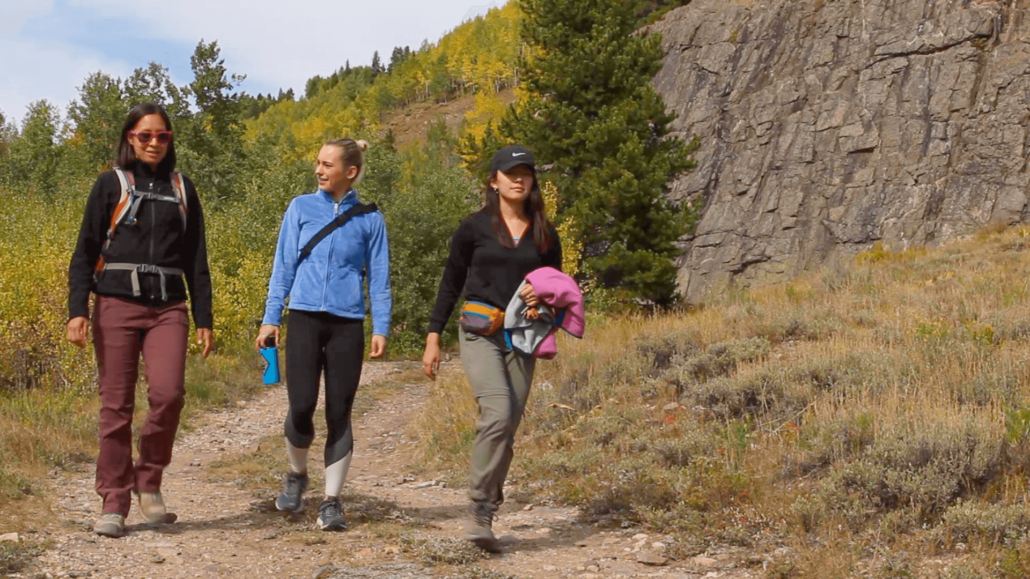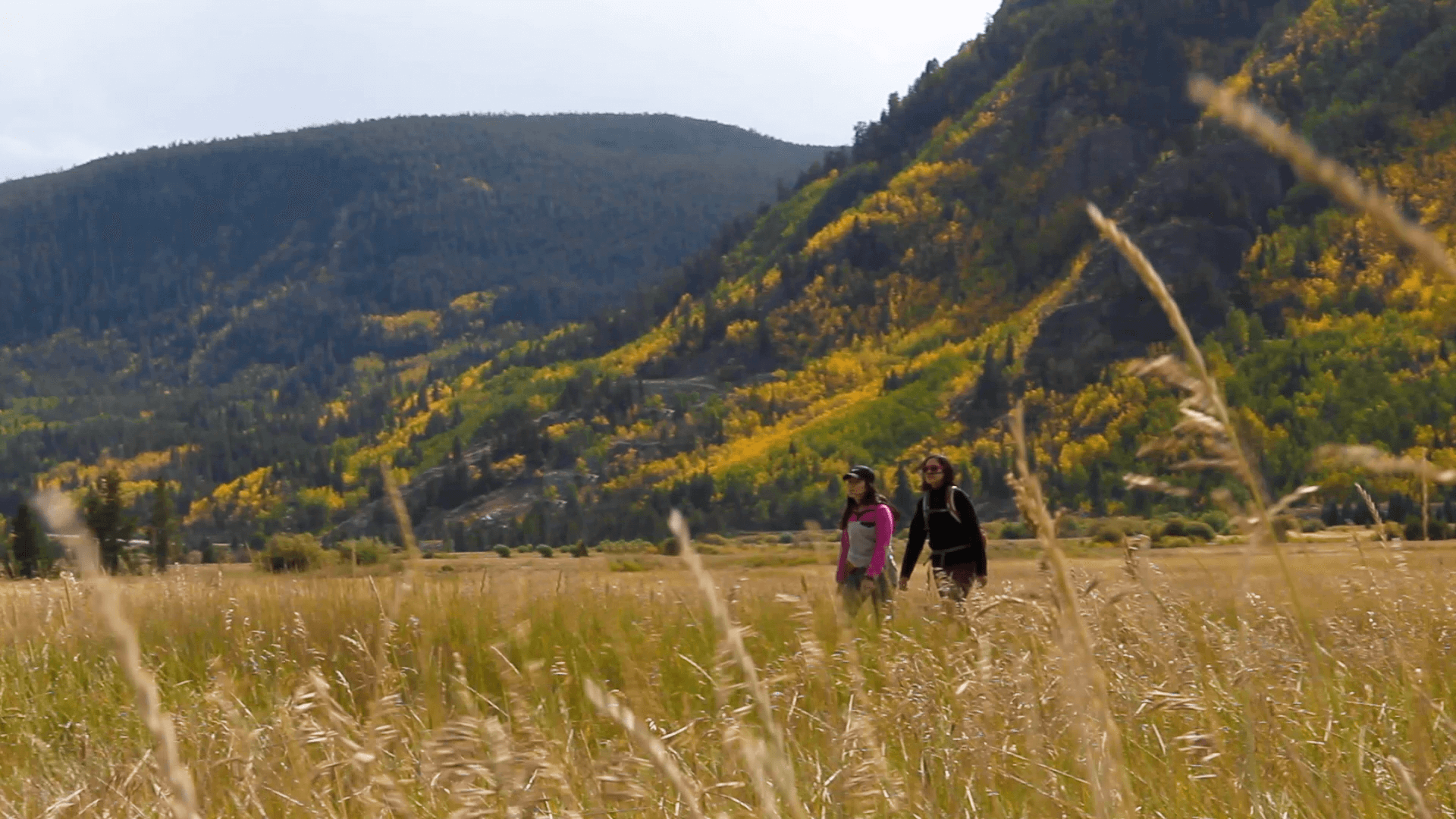A Cornerstone Public Lands Package:
The CORE Act supports many pathways to public lands stewardship
By: Koki Atcheson
I draw my appreciation for public lands and open spaces from a treasury of memories spending time outdoors with loved ones. I think back to feeding my dad trail-picked huckleberries in the Cascades as I hitched a ride in his hiking backpack. To riding my first ankle-snapping manini waves at Canoes surf break on Waikīkī beach. To picnicking with friends both old and new at Cheesman Park. What connects these moments in time? Relationships strengthened by shared challenges, unforgettable views and lasting memories created on public lands.
These lands are many things for many people. They can be a place of solitude, study, spiritual value, or physical rigor. They are beautiful because they offer a range of avenues to make connections — and develop steward identity.
To me, public lands stewardship means dismantling barriers so that all people may access the protected landscapes in perpetuity. Which is why I support policies that ensure increased access and protections — policies like the Colorado Outdoor Recreation and Economy (CORE) Act.

Koki Atcheson, Communications Fellow
The CORE Act — introduced by Colorado’s Rep. Joe Neguse and Senator Michael Bennet — is built upon years of collaboration among stakeholders, and would protect some 400,000 acres of precious wild lands across Colorado, including those in Camp Hale, the Thompson Divide, Continental Divide, Curecanti Nature Preserve, and San Juan and Uncompahgre National Forests. What’s more, the legislation would be the first ever to designate a National Historic Landscape. If passed, Camp Hale would be preserved in perpetuity as the nation’s first federally recognized historic landscape, honoring the 10th Mountain Division and their legacy as elite mountaineers training to fight in high alpine conditions in Italy during World War II.
Our team had the opportunity to visit Camp Hale and experience the value of this landscape firsthand. We all approached the day in our own way, through climbing, hiking, photography, videography, conversation, and (importantly) snacking.
I was particularly looking forward to the day’s rich conversation, because Jamie Diaz, a co-leader of the Colorado chapter of Outdoor Asian, was able to join us. Prior to moving to Colorado seven years ago, Jamie had never really been immersed in the outdoors. It wasn’t until she made the move that she got into hiking, rock climbing, snowshoeing, and even camping.
Now, she finds peace and self-care in time spent outside.
“There are those quiet moments when we’re able to reflect on the beauty of the space that we’re in, and realize in the grand scheme of things, our worries are not as big as we make them out to be,” she said. “Being outside is a great way to take care of yourself — and it also reminds us to take care of the land that we’re on.”

Jamie Diaz, outdoor enthusiast and co-leader of the Colorado chapter of Outdoor Asian
The land that we’re on. I appreciate Jamie’s phrase of choice, because I’ve heard phrases like “our lands,” “our public lands,” and “America’s pristine landscapes” too often — especially in the conservation community.
After clarifying that she is fully committed to her own continued learning of diversity, equity, and inclusion, and is not an expert, Jamie continued, “the land that Americans inhabit are Indigenous and Native lands. To recognize that we have taken things away from other people and are now trying to protect it for future generations, we must remind ourselves that the land was never ours. Since the United States owns this land, we must ask how we can move forward and offer access to all caretakers, past, present, and future.”
Moving away from a relationship of ownership to one of caretaking and stewardship could be one step in undoing persistent and harmful practices of settler colonialism. But equity in outdoor recreation and human-nature relationships will be a multi-generational journey that must be co-created with (not co-opted from) Indigenous peoples, the original protectors of the land Americans occupy.
I admire Jamie for her contributions to an equitable future of recreation through Outdoor Asian. Along with co-leaders, she works “to build community and encourage people who identify as Asian and/or Pacific Islander to explore the outdoors and know that they are welcome and that they belong there.” The need for affinity groups in the Colorado outdoor recreation world is clear — many people do not feel welcome in the outdoors because of their gender, their size, their racial background, or their ability.
I resonate with her statement. I too have felt unwelcome in outdoor spaces. But with affinity groups like Outdoor Asian, organizations’ work to abandon a colonist’s model of public lands, and increased protection for precious landscapes, I feel hopeful about Colorado’s public lands future.
Jamie does too. “The second that we can connect people to a place where they can experience beauty and something special, they can connect to the land and realize this is something that we need to take care of.”

Jamie Diaz, Asheton Gilbertson, and Koki Atcheson hike on a trail at Camp Hale
In our meandering discussion of public lands, I felt deeply grateful for the many ways I’ve benefited from open spaces. I’ve built relationships on varied terrain, studied ecosystem dynamics, and felt emotionally uplifted from natural surroundings. At Camp Hale, I also felt the gravity of history, standing on what was once was a training ground for an elite division of young soldiers. I can’t pretend to know the camaraderie of the 10th Mountain Division, but I saw the way this landscape strengthened our team’s sense of community and offered the ideal medium to build a new friendship.
From sharing conversations about inclusion in outdoor spaces, to hiking a new trail or climbing a new wall, there are many ways to appreciate and benefit from public lands. But to ensure that all people have access to public lands for generations to come, we need to protect them from development, as proposed in the CORE Act.

Jonathan Trites, Jamie Diaz, Asheton Gilbertson, Koki Atcheson, Jon Kalantar and Garrett Garner-Wells at Camp Hale
On October 31st, 2019, the CORE Act passed through the U.S. House. This accomplishment would not have been possible without your advocacy and support.
The CORE Act’s next stop is the U.S. Senate, where passage — and even consideration — are uncertain. Despite widespread support for this bill and the economic and recreation benefits it will secure for Colorado, Sen. Cory Gardner has remained silent.
Supporting the CORE Act is a clear choice that transcends politics, but now politicians stand in the way. Twenty years from now, I hope to return to Camp Hale and reflect on the relationships I built during my day trip, the legacy of the 10th Mountain Division, and Colorado’s more inclusive conservation legacy with the CORE Act as a cornerstone.






